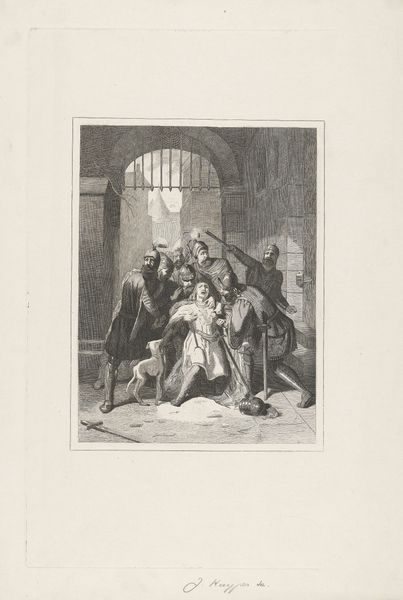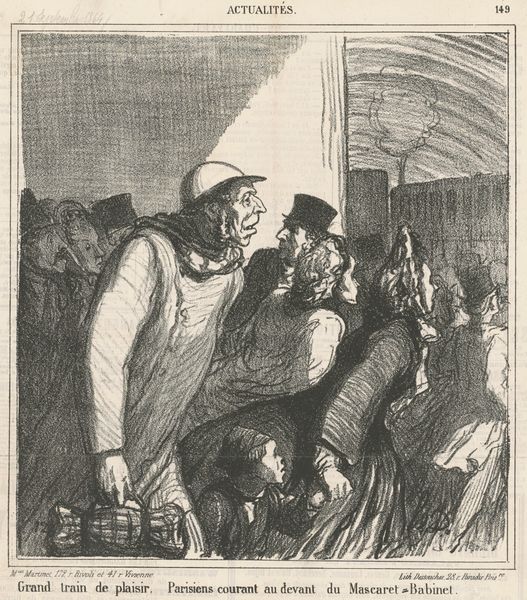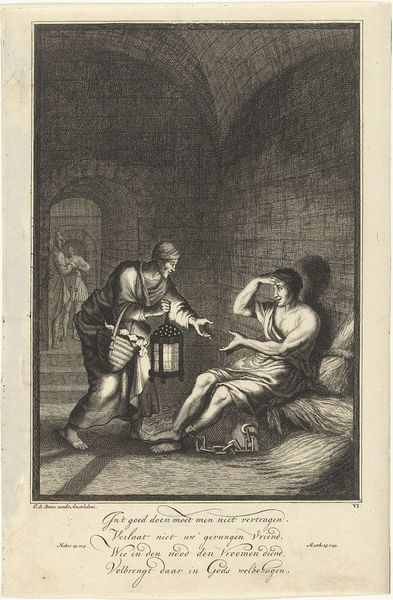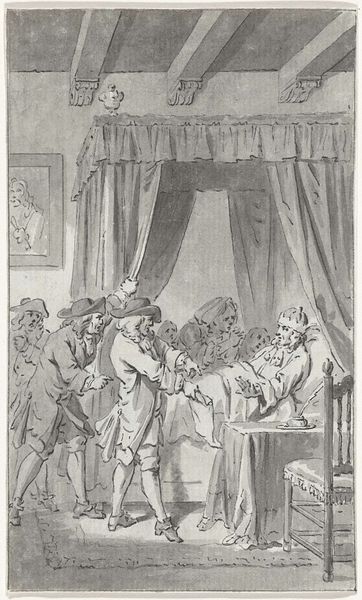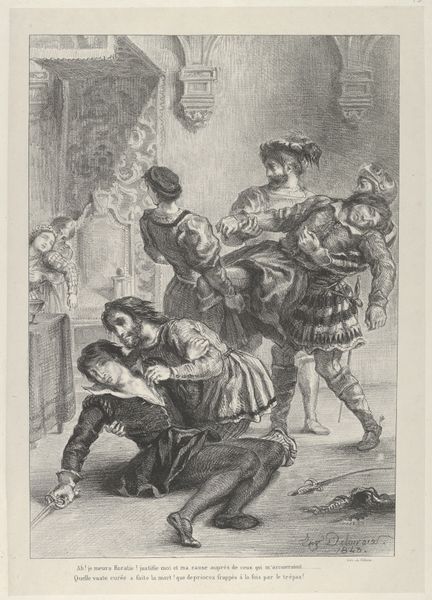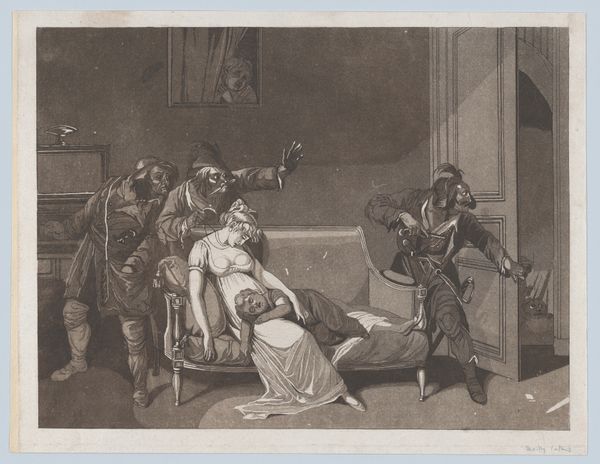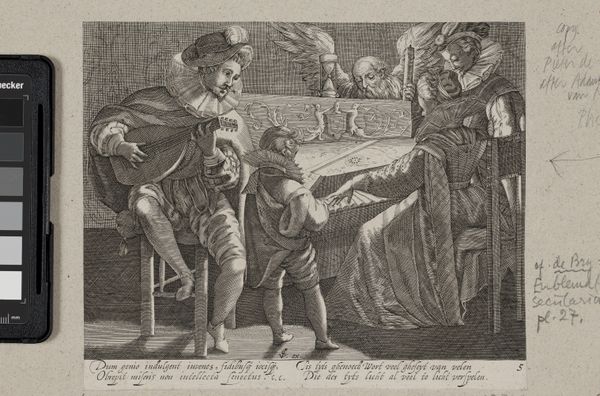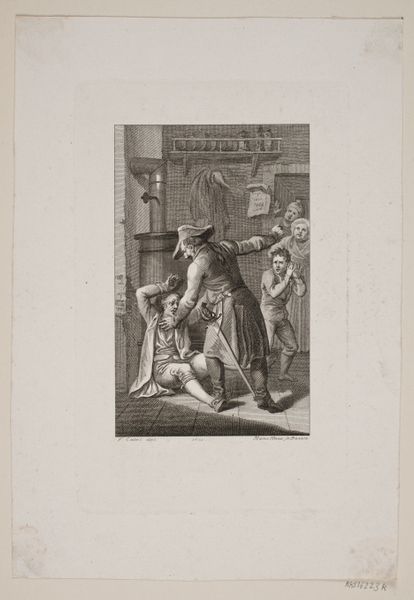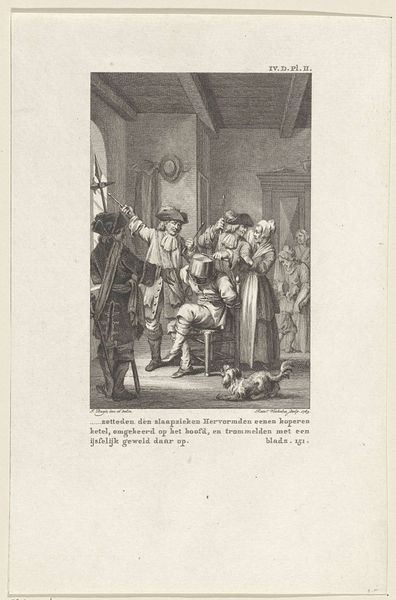
The Duke of Clarence Asleep in the Tower, as Brackenbury Leaves (Shakespeare, Richard III, Act 1, Scene 4) 1825 - 1840
0:00
0:00
drawing, print, engraving
#
drawing
#
narrative-art
# print
#
figuration
#
romanticism
#
men
#
history-painting
#
engraving
Dimensions: Sheet: 3 7/16 × 2 9/16 in. (8.8 × 6.5 cm)
Copyright: Public Domain
Editor: This is "The Duke of Clarence Asleep in the Tower," a print from between 1825 and 1840, illustrating a scene from Shakespeare’s Richard III. It's quite striking how much weight the artist gives to the emotional distress of the Duke even as the other figures hover menacingly. What are your thoughts when you see this print? Curator: Well, immediately I think about the popularity of Shakespearean themes in the 19th century, and how prints like these democratized access to "high culture." What this image really presents is the tension between personal anguish and political machinations. Consider how the Tower, initially built as a symbol of royal authority, by this point had become ingrained in the public imagination as an ominous space of confinement and suffering. Do you think the artist is interested in critiquing power? Editor: That’s interesting. I hadn't considered the choice of the tower itself as being an element of the imagery’s political message. I guess I assumed they used the tower because that’s simply where the play is set. And, to answer your question, yes, I do. The Romanticism of the artwork makes Clarence’s grief into the centerpiece, as opposed to the figures facilitating his imprisonment. I wonder about how widely distributed images like these shaped popular perceptions of historical events. Curator: Exactly. It highlights the role of the artwork not merely as an illustration, but as an interpretation, influencing how audiences understood these power dynamics and their historical consequences. Furthermore, notice how the composition directs our attention: Clarence, though physically confined, occupies the emotional foreground, contrasting with the indistinct, almost spectral, figures lurking behind him. It speaks volumes about whose suffering matters and who remains hidden in the shadows of political power. Editor: I hadn't really picked up on the power that these prints had at the time; it's a good reminder of the social context in which artwork appears. Curator: And a reminder of how artists make active choices. This work serves as a fantastic example of how visual culture, even seemingly simple prints, played a role in constructing historical narratives and shaping social consciences.
Comments
No comments
Be the first to comment and join the conversation on the ultimate creative platform.
